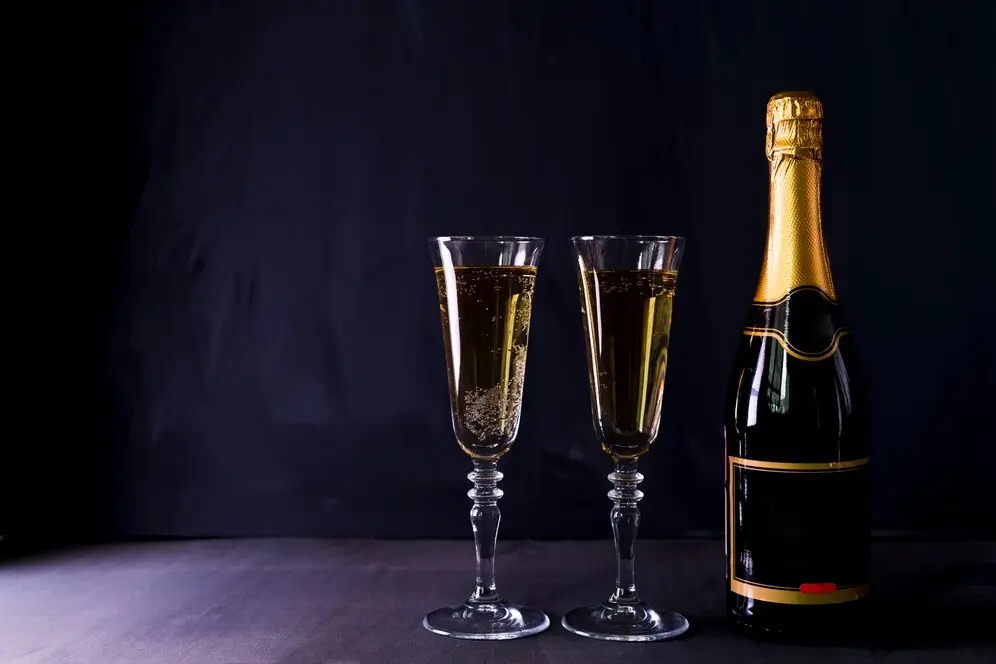Sparkling Wines Explained: Unveiling The Spectrum From Dry To Sweet
Sparkling wines, with its effervescence and celebratory aura, has enchanted palates around the world for centuries. From toasts at weddings to the pop of a cork on New Year’s Eve, sparkling wine has become synonymous with joy and festivity.
Table of Contents
However, navigating the vast array of sparkling wines can be a daunting task, especially when it comes to understanding the spectrum of sweetness levels, ranging from bone-dry to lusciously sweet.
In this comprehensive guide, we’ll explore the world of sparkling wine, unravel the production methods, and delve into the diverse range of sweetness levels, helping you make informed choices for any occasion.
I. The Origins of Sparkling Wine:
The history of sparkling wine is rich and fascinating, with its roots tracing back to 17th-century France. Legend has it that the effervescence in wine was discovered accidentally when bottles underwent a second fermentation in the bottle, a process known as méthode champenoise.
This discovery laid the foundation for the renowned sparkling wines of the Champagne region, setting the stage for a global sparkling wine phenomenon.
II. Production Methods:
Understanding the various production methods is crucial in deciphering the complexity of sparkling wines.
The two primary methods are the Traditional Method (méthode champenoise) and the Tank Method (Charmat method).
- Traditional Method (Méthode Champenoise):
- Grapes are harvested and fermented into still wine.
- The wine undergoes a second fermentation in the bottle, creating carbonation.
- Aging on lees (dead yeast cells) imparts complexity and flavor.
- Bottles are then disgorged, and a dosage (mixture of wine and sugar) is added.
- Tank Method (Charmat Method):
- Wine undergoes the first fermentation in tanks.
- A second fermentation occurs in a pressurized tank, promoting carbonation.
- After fermentation, the wine is filtered, and the final product is bottled under pressure.
III. The Spectrum of Sweetness:
Sparkling wines come in a spectrum of sweetness levels, from bone-dry to sweet. The sweetness is determined by the residual sugar content, measured in grams per liter (g/L). Let’s explore the various categories:
- Brut Nature/Zero Dosage (0-3 g/L):
- Bone-dry with minimal to no added sugar.
- Ideal for those who prefer a crisp, sharp profile.
- Commonly associated with high-quality Champagne.
- Extra Brut (0-6 g/L):
- Very dry with a touch more sweetness than Brut Nature.
- Offers a clean and refreshing taste with a hint of richness.
- Brut (0-12 g/L):
- The most common style, striking a balance between dryness and a hint of sweetness.
- Versatile and pairs well with a variety of dishes.
- Extra Dry (12-17 g/L):
- Contrary to its name, Extra Dry is slightly sweeter than Brut.
- A good choice for those who enjoy a touch of sweetness without it being overwhelming.
- Sec (17-32 g/L):
- Moderately sweet, making it suitable for those who prefer a noticeable sweetness.
- Often associated with sparkling wines from regions outside of Champagne.
- Demi-Sec (32-50 g/L):
- Semi-sweet to sweet, often chosen for desserts or as an aperitif.
- Displays a more pronounced sweetness without being cloying.
- Doux (50+ g/L):
- The sweetest category, reserved for dessert wines.
- Rare and decadent, with a luscious and honeyed character.
IV. Popular Varieties and Regions:
- Champagne:
- The epitome of sparkling wine excellence, Champagne hails from the eponymous region in France.
- Known for its elegance, finesse, and aging potential.
- Prosecco:
- A popular Italian sparkling wine made using the Charmat method.
- Generally lighter and fruitier than Champagne, with flavors of apple and pear.
- Cava:
- Originating from Spain, Cava is crafted using the Traditional Method.
- Offers a great value alternative to Champagne with a distinct Spanish flair.
- Sparkling Rosé:
- Produced worldwide, sparkling rosé comes in various sweetness levels.
- Elegant and versatile, it can range from bone-dry to semi-sweet.
V. Food Pairing and Serving:
Understanding the sweetness levels of sparkling wine is key to successful food pairings. Here are some general guidelines:
- Brut Nature/Zero Dosage: Ideal with oysters, caviar, and other delicate seafood.
- Brut: Versatile and pairs well with a range of dishes, including sushi, poultry, and soft cheeses.
- Extra Dry/Sec: Complements slightly sweet dishes like glazed ham or mild curries.
- Demi-Sec/Doux: Best enjoyed with desserts such as fruit tarts, pastries, or creamy desserts.
When serving sparkling wine, remember to chill it to the appropriate temperature. While Champagne is typically served cooler (around 45-48°F or 7-9°C), sweeter sparkling wines benefit from slightly warmer serving temperatures to enhance their flavors.
Conclusion:
In conclusion, the world of sparkling wine is a captivating journey through tradition, craftsmanship, and a spectrum of flavors. Whether you prefer the bone-dry sophistication of a Brut Nature Champagne or the luscious sweetness of a Demi-Sec sparkler, there is a sparkling wine to suit every palate and occasion.
Armed with knowledge about production methods, sweetness levels, and popular varieties, you can confidently navigate the effervescent world of sparkling wine, toasting to life’s special moments with a glass of bubbly that perfectly suits your taste. Cheers!

